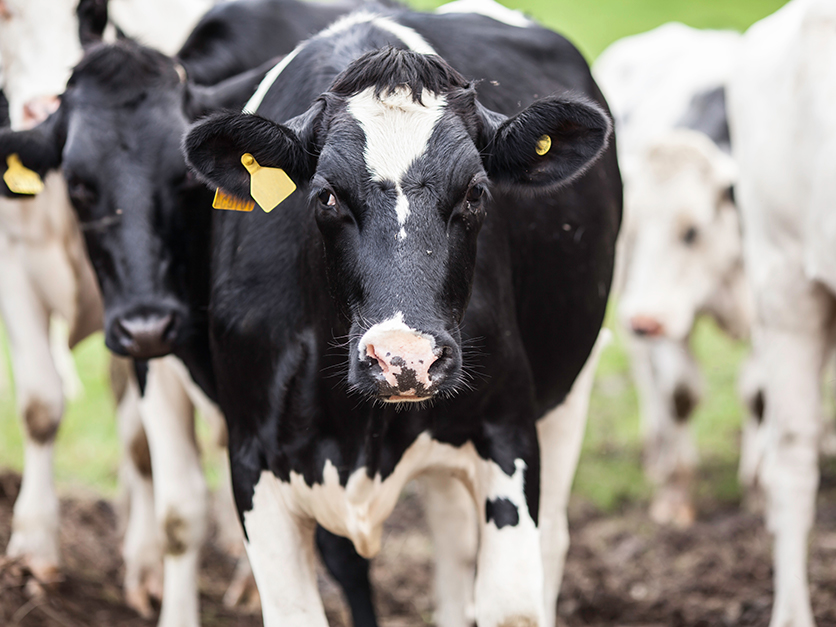Hundreds of dairies in the Central Valley are racing toward a March 2021 deadline to complete plans for managing nitrate runoff and for providing safe drinking water to impacted communities.
“It's ongoing, it's getting started, and you don't have much time” said Tess Dunham, a partner at Kahn, Soares & Conway LLP, during a recent panel discussion for the California Dairy Sustainability Summit.
A compromise between the agriculture industry and the Central Valley Regional Water Quality Control Board grants dairies 35 years to come into compliance with the Nitrate Control Program, when the board typically allows a schedule of five to 10 years. The tradeoff is dairies have to ensure safe drinking water for disadvantaged communities in the meantime.
The nitrate and drinking water plans will face rigorous scrutiny, and any dairies taking on the regulation alone would be wading into a costly and complex process involving hydrological assessments, extensive monitoring and water delivery projects.
“For dairies, this is a very difficult standard to meet,” said Dunham.
Instead, dairies and other waste dischargers have formed coalitions to spread the costs and responsibility across broader management zones. According to Dunham, this new flexibility and local control were the main reasons why the agricultural stakeholders—through a decade-long process to develop the CV-SALTs (Central Valley Salinity Alternatives for Long-Term Sustainability) regulatory program—pushed for a different approach to managing nitrate contamination.
While dairies are the most directly impacted, the management zone cooperatives also include food processors, wineries and even environmental justice groups, community residents and local groundwater sustainability agencies. Each coalition must ensure those voices are heard when drafting the plans. The highest priority areas are Modesto and Turlock, Chowchilla, Kings, Kaweah and Tule.

Tess Dunham, a water quality attorney for Kahn, Soares & Conway
Charlotte Gallock, who coordinates the Kings River Water Quality Coalition District, said it’s going to take her coalition the full 270 days allotted by the water board to develop the technical information needed for both the management zone implementation plan and the early action plan for drinking water.
“We've got a lot of soft commitments from folks that want to be involved, but are not sure what level they want to be involved,” she said. “Other folks have been there from the start. Then some other folks aren't sure what's happening.”
The coalition is trying to spread the costs equally among the stakeholders while ensuring the effort remains fully funded, on track for deadlines and vetted with the communities. To deliver safe drinking water to impacted areas, the group has developed two self-serve fill stations that average about 100 gallons a day, with residents filling up gallon-sized containers to take home.
“One important message for dairies today is to expect to see that it will result in new costs and those will result in fee increases next year, especially for bigger dairies,” said J.P. Cativiela, who administers the Central Valley Dairy Representative Monitoring Program and is the environmental affairs director at Dairy Cares.
Interested in more coverage and insights? Receive a free month of Agri-Pulse West.
Cativiela estimated it will cost about $3 million for all priority areas to complete their initial plans. For his members in the monitoring program, it translates to about an extra $700 a year, with larger dairies taking a greater share. Unlike Gallock’s coalition, Cativiela’s program has already been handling other water quality monitoring and reporting requirements for its 1,200 members for a decade. The group has now stepped in to help members comply with the Nitrate Control Program, which minimizes administrative costs. But Cativiela cautions the members that compliance is complicated and will take time.
“There have been a lot of improvements in dairy and agriculture,” he said. “But we have a long way to go to get to the levels the state has targeted for nitrates.”
The stakes are high for failure. If the regional water board or the State Water Resources Control Board decides a plan is not up to par, it would likely require adjustments. But the water board could withdraw a plan entirely if it is subpar, forcing each stakeholder into the individual permitting pathway and raising costs significantly, according to Dunham.
“You're talking probably upwards of $50,000 for an initial assessment,” she said. “It behooves all of us to make sure that these early action plans are at the levels that the regional board wants them to be.”


